Ethnobotany of the
Big Bear Lake area, California
Part 2
|
Erigeron divergens - Spreading Fleabane
The dried, ground-up plant is used as “snuff” to relieve headaches. |
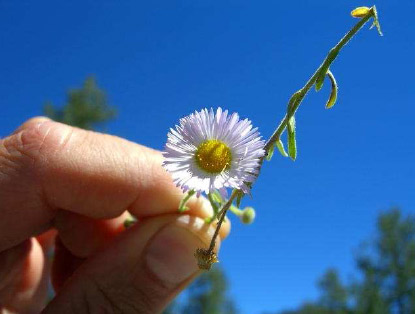 |
| |
Eriogonum wrightii ssp. subscaposum
Eriogonum davidsonii
Eriogunum umbellatum
Eriogonum parishii
Buckwheat
Seeds can be ground-up and eaten raw and cooked. |
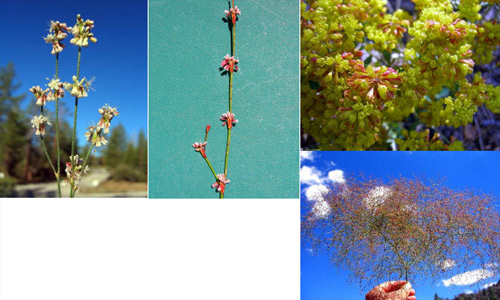 |
| |
|
|
| |
Erysimum capitatum - Wallflower
The whole plant, pounded and boiled, can be applied to wounds to speed
healing. A tea made from the crushed seeds ease stomach aches (it seems
that a lot of plants in the mustard family are effective in this
manner). |
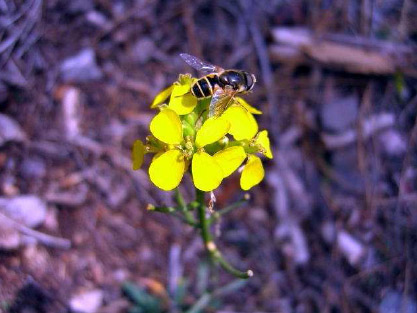 |
| |
Helenium bigelovii - Sneezeweed
To relieve a head-cold, one can use the dried, powdered flowers as a
snuff to encourage sneezing (it sure works!). |
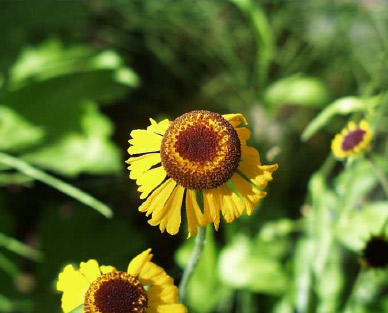 |
| |
Iris missouriensis - Iris
The leaves, when dried and split, make a strong cordage when twined
together. Earaches can be soothed when a tea made from the root is
applied
as ear drops. The raw root (slightly acrid but offers a cooling
sensation) can be applied to sore teeth and gums. |
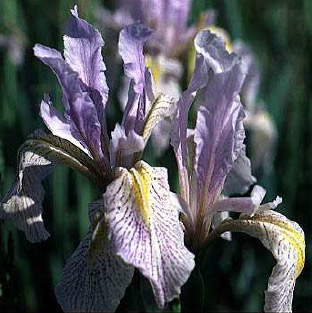 |
| |
Juniperus occidentalis - Sierra Juniper
The fruit can be eaten raw (pitchy taste) and cooked (which removes
most of the medicinal taste and softens the berries right up). I spit
the “pits” (cones) out. The shreddy bark makes great fire tinder and
slowmatch (for carrying fire). A spicy incense from the foliage is
burned and the smoke inhaled to relieve headaches. The dried seeds can
be used in rattles. The wood is easily carved and extremely durable. The
roots are used in basketry. A tea made from the berries can relieve
constipation and improve the blood (blood tonic). |
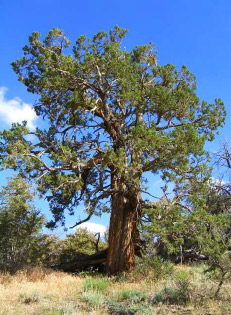 |
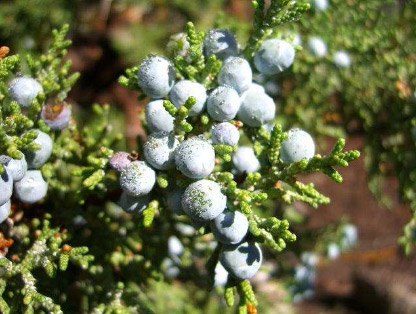 |
| |
Layia glandulosa - Tidy Tips
Seeds can be ground-up and eaten raw and cooked (added to bread, made
into porridge). |
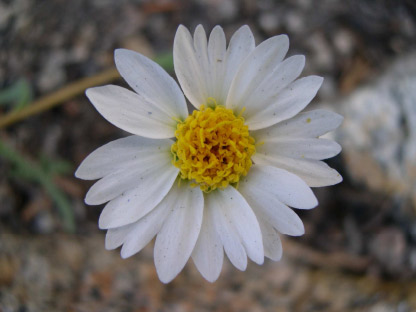 |
| |
Lepidium sp. - Peppergrass
The seeds can be used as one would pepper. The leaves can be chewed for
a hot flavor (the flavor intensity varies from plant to plant) and to
relieve headaches. |
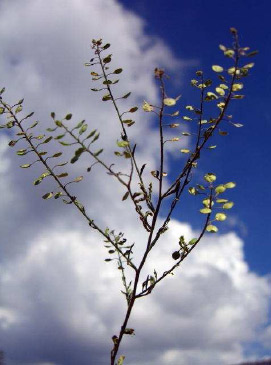 |
| |
Letharia columbiana - Wolf Lichen
I included this lichen because it can be deadly poisonous. Don’t eat it.
A strong dye can be extracted as well. Letharia vulpina is also toxic. |
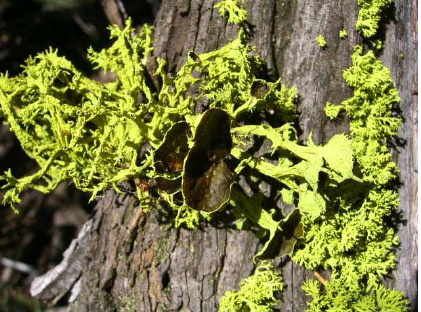 |
| |
Lewisia rediviva - Bitterroot
The cooked root is edible and extremely nutritious. Eaten raw, the root
(blood purifier) can counteract the effects of poison ivy and poison
oak. Raw or cooked, the root has been shown to be effective in combating
diabetes. |
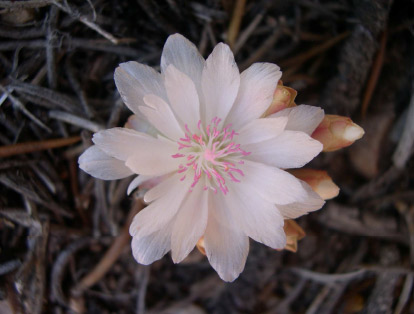 |
| |
Linium lewisii - Flax
Strong, thin fibers can be extracted from the outer skin of the stem
after the stems begin to die. |
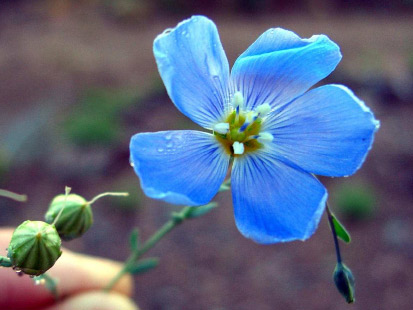 |
| |
Lupinus andersonii - Anderson’s Lupine
Although the seeds contain stomach-upsetting alkaloids (similar to
common garden beans), these compounds can be leached out by soaking the
seeds in warm water for 36-48 hours (just like common garden beans).
Make sure you change the water at least four times during this process. |
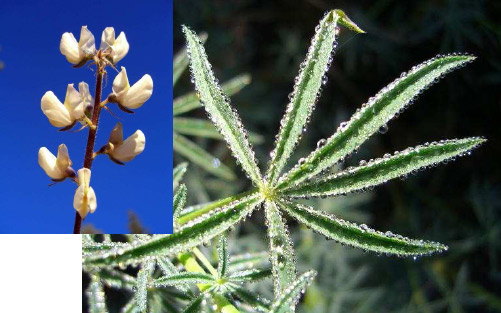 |
| |
Melilotus alba - Sweet White Clover
The plant (flowers in particular) can be hung indoors for its sweet
fragrance. I’ve ground-up the dried flowers to use as incense. It smells
better when used in conjunction with other aromatic plants. |
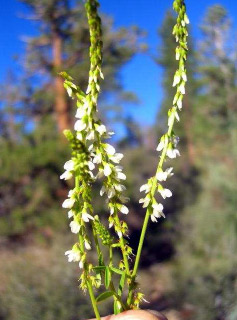 |
| |
Mimulus guttatus - Seep Spring Monkey Flower
Leaves are edible raw and cooked (cooking dispels most of the bitterness
found in the leaves after the plant flowers). A tea made from the leaves
and stems can be topically applied to soothe chest and back soreness. |
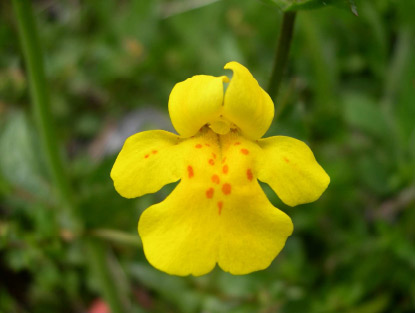 |
| |
Monardella linoides - Pennyroyal
Leaves and flowers make a slightly minty, sweet tea. |
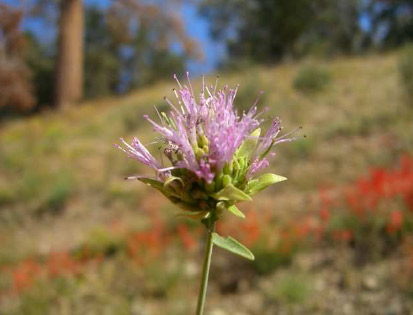 |
| |
Nicotiana attenuata - Coyote Tobacco
Obviously, the leaves can be smoked. I have smoked the dried leaves on a
numerous occasions—the taste is fair, the psychological effects are
minimal. The Navajo smoke the leaves to relieve headaches. |
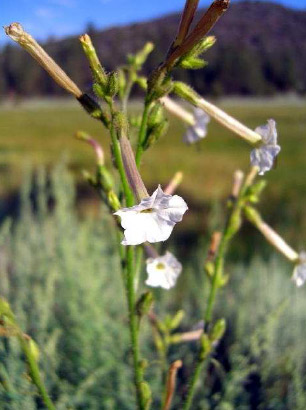 |
| |
Oenothera biennis - Evening Primrose
The fleshy, sweet root can be eaten boiled or roasted. It has a great
carrot-like taste, is a little mucilaginous, and leaves a slight
tingling sensation in my mouth. Steamed seeds contain gammalinolenic
acid, an essential fatty acid which manages blood pressure, controls
joint inflammation and prevents cardiovascular disease. The
root-to-shoot ration is quite low, so I don’t harvest the root much (a
lot of foliage is discarded for so little product). |
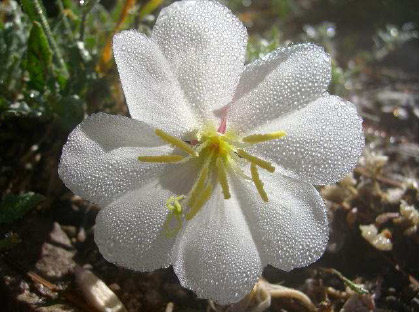 |
| |
Opuntia basilaris var. basilarus - Beavertail Cactus
The flesh inside the pads (known as nopales) is edible when cooked (I
fry them). The spines can be removed with a small stick. |
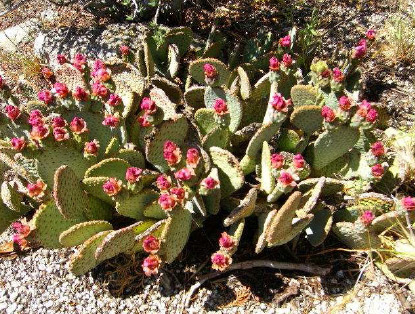 |
| |



